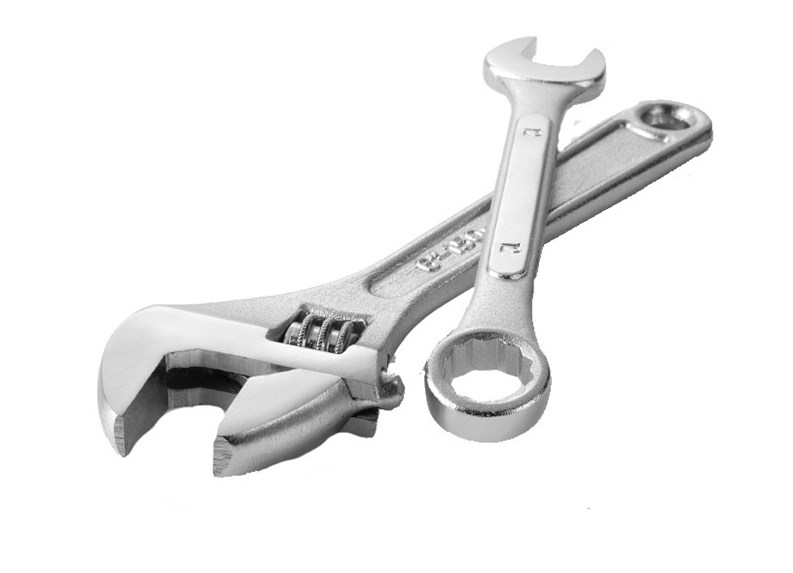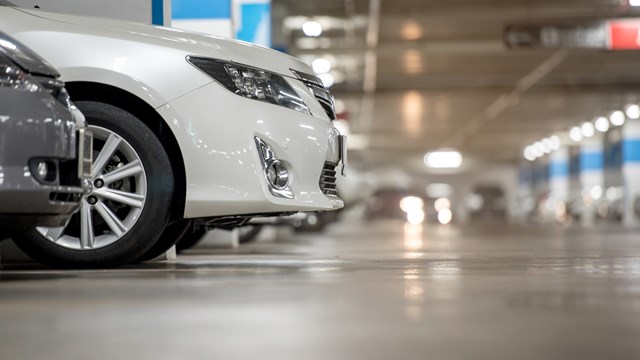In a vertical city like New York where it’s not uncommon for people to wake up in a mid-rise apartment building before heading to work in a midtown skyscraper, it’s easy to take elevators for granted. Easy, that is, until something goes wrong with one. And when something does go wrong, it can even end up in the next day’s headlines—like in April, 2005, when deliveryman Ming Kuang Chen spent three days trapped in the elevator of a Bronx high-rise. Or like last May, when several young tourists were stuck very publicly inside the glass elevator cage at Apple’s brand new Fifth Avenue store in Manhattan.
Fortunately for nervous riders, elevator mishaps happen infrequently. According to the Elevator Escalator Safety Foundation (EESF), going by elevator is one of the safest ways to travel, with 12 million rides for every trip to the emergency room. And statistically speaking, the odds are that someone who uses an elevator every day will get trapped in one only “once in a lifetime.” That kind of reliability doesn’t happen by accident; passenger elevators have always been designed with safety in mind.
In the Beginning
We’ve been using the elevator in one form or another for thousands of years. Which isn’t too surprising, considering that at its most basic, an elevator is just a platform attached to a hoist. For most of that time, however, elevators were used chiefly to haul building materials and other heavy, unwieldy objects up and down.
It wasn’t until the mid-1800s that the elevator became feasible as a means to transport people—and transport them safely. It was Elisha Graves Otis who conceived the idea for a “safety elevator.” He built the first one in 1852, demonstrating the device dramatically by instructing that the elevator’s cable should be snapped while he stood on the platform. True to its name, the safety elevator was equipped with a brake that would automatically engage if the cab started moving too fast—a vast improvement over other elevators of the day, which required occupants to scramble for a hand brake in case of accidents.
Otis first installed his elevator in 1857, placing it in the Haughwout building at 488 Broadway. Over the next 50 years, Otis and others continued to improve on his basic model. Werner von Siemens added electrical power to the elevator in 1880, making the device more efficient. The Otis Elevator Company first built a passenger elevator in a residential structure about 1890, and in 1903 they introduced the revolutionary gearless traction elevator, which would help usher in an age of skyscrapers.
Honoring the Codes
As passenger elevators proliferated in the early 20th century, it became clear that the industry would soon need standards and safety regulations. The American Society of Mechanical Engineers (ASME), with input from the Elevator Manufacturers Association of the United States, published the first safety codes for elevators and escalators in 1921, according to the National Elevator Industry, Inc. (NEII).
The codes spelled out a number of conditions that elevators should have to meet in order to be considered safe. According to EESF, these included specifications “for locking landing doors, safety equipment for the car to prevent falling and excessive speed, [and] limit switches at the extremes of travel” to prevent elevators from going too high or too low. The codes were first revised in 1925, and became the US industry standard in 1931, undergoing new revisions as technology has advanced through the years.
Making sure that elevators are up to par is the responsibility of local municipalities, whose own laws may replace or supplement certain parts of the national code. This is the case in New York City, where elevator regulations are enforced by the New York City Department of Buildings’ Elevator Division, which is responsible for ensuring “the safe and lawful use” of the city’s 63,000 elevators, escalators and even amusement rides. With New Yorkers riding elevators alone over 30 million times per day, the Elevator Division has a lot of ground to cover.
Welcome to the Machines
Mechanically speaking, there are two kinds of passenger elevators used today in New York residential buildings: traction and hydraulic. Traction elevators are probably more prevalent in the popular imagination, and are more common than hydraulic models in the city by about a 4:1 margin. These elevators are hoisted by a set of four to eight cables that are threaded over a grooved pulley (the sheave, in industry parlance) at the top of the shaft and affixed to a counterweight that rises when the elevator descends, and vice versa. The sheave is turned by an electric motor; in gearless traction elevators, the motor is directly attached to the sheave, and in geared traction models, the motor is engaged to a geartrain that turns the sheave. Since the counterweight weighs about as much as the elevator when filled to about 40 percent capacity, a traction elevator takes relatively little energy to operate.
The less common hydraulic type is operated by means of a hydraulic ram, consisting of a piston mounted below the elevator inside a hollow cylinder and adjoined to an electric pump motor. The elevator rises when a liquid substance— usually oil—is pumped into the cylinder. To lower the elevator, the liquid is released from the cylinder by way of a valve. These elevators aren’t commonly found in buildings higher than four or five stories; the taller the building, the longer the piston needs to be, and the deeper the cylinder needs to be sunk. Hydraulic elevators are powerful and efficient, though, and generally cheaper than traction models.
Maintenance for Safety and Function
As with any heavily used machine with lots of moving parts, an elevator needs regular, thorough maintenance to keep working properly.
Preventive maintenance is imperative, says Don Gelestino, president of Ver-Tech Elevator in Queens. An average elevator lifespan is 25 to 30 years, so it is important to keep the entire system in shape so that safety doesn’t become an issue.
As for your day-to-day role, elevator professionals recommend keeping your ears open for any strange squeaking or grinding noises in the cab, and having your superintendent check the machinery periodically for oil leaks or anything unusual that could signal trouble.
According to Kenneth Breglio of BP Elevator Company in the Bronx, automatic elevators are “pretty self-sufficient,” and there’s not much you can do to prevent wear and tear. He warns that if you have a manually-operated elevator however, it’s important to make sure the operator runs it with a gentle touch. “You need to make sure the operator slows down as he comes to a stop. If you run it into the pit, you put a strain on the equipment.”
And if a time comes when you’re constantly making repairs to your building’s elevator, that may be your cue to consider a full replacement.
“You have to consider age, usage and dependability,” says Breglio. “When you’re making constant large repairs, and the elevator’s out of order all the time, it’s probably time for a new one. You just look at your yearly bills and compare them to the cost of replacement.” The experts say the expected lifespan of a modern elevator installed today is about 30 years while older elevators may only last about 25 years.
Prepare for Inspection
In order to keep its elevators running in tip-top shape, New York City’s laws mandate frequent inspections of each traction and hydraulic device. Local Law 10 of 1981 first required that annual inspections of elevators in the city be carried out by licensed private agencies, and laid down the criteria by which inspectors are deemed qualified to perform such duties. Such agencies included insurance companies, elevator manufacturers and elevator consultant firms. A prospective inspector must have seven years of industry experience and pass a test in order to obtain a license. Agency directors, who oversee one or more inspectors, must pass a separate test and have at least 10 years experience under their belt.
According to Michael Mottola of Manhattan-based Vertical Systems Analysis, elevators must undergo an annual mechanical inspection, a safety inspection every two years, and one full-load inspection every five years during which the elevator is tested after being filled to its load capacity. The cost of each inspection varies by the height of the building and the type of equipment on site, but for an elevator in a 20-story building, an inspection can run “somewhere around $2,500,” says Mottola.
If an inspection turns up a problem with an elevator, the consequences depend on the violation’s severity. A serious malfunction will result in a fine levied by the city, and in some cases the elevator can be shut down (one example, according to Mottola, was an elevator running with the doors open). For problems like these, and for lesser difficulties and routine repairs, a call to an elevator contractor is in order.
Contracting for Care
Of course, the first line of defense against unexpected problems—and costs—during the inspection process is the maintenance contract. For that reason, New York City law requires any building with an elevator to also have a maintenance contract in good standing with a qualified elevator contractor.
Breglio suggests monthly or bi-monthly service visits, depending on the model and age of your machinery. A typical service contract should run about $3,600-$5,000 per year for a small, one-elevator residential building, he says. Make sure to go over what’s included in your maintenance agreement before you sign.
“A routine maintenance call should include cleaning, lubrication, adjustments on relays, and a general once-over to make sure everything’s in order,” Breglio advises.
It’s also wise to look for a company with experience. “Don’t be shy about asking for references, and look for a company with depth of experience,” says Al Milo of Brooklyn’s Dunwell Elevator, a company that does maintenance, repair and modernization. “And make sure they offer 24-hour service.”
Dan Hrivnak, of Midland Elevator in White Plains, estimates that a standard elevator maintenance contract runs between one and five years. As with inspections, costs vary by height, type of elevator and other factors, but “up to 40 floors, $400 to $500 per elevator is pretty common—and that’s including repair calls,” he says.
Elevator repair professionals need to go through at least five years of training, which includes hands-on work, apprenticeship, and schooling, then pass an “all-encompassing” written exam. Training programs tend to be run by trade unions, although there are some non-union contractors; in the New York City area, many shops are affiliated either with the International Union of Elevator Constructors Local 1 chapter or the International Brotherhood of Electrical Workers Local 3 chapter.
The Safest Ride
Although some riders might fear the worst when they think of elevator malfunctions—being trapped for days in a stalled car, or worse, a snapped cable, followed by a plunge to the bottom of the shaft— redundant safety measures make nightmare scenarios like these extremely rare to nonexistent.
When a repair does have to be made, the pros say it’s generally something relatively benign, such as maladjusted doors or leveling problems. That said, people do get trapped in elevators. Hrivnak guesses that his firm gets a call for a stuck elevator about once a week, especially during the summertime, when citywide electricity demands cause elevator voltage deficiencies.
Happily though, elevators in New York City are very safe. Mottola says that compared to 20 or 30 years ago, “elevators are definitely safer,” due to better maintenance in general and modernizations that have replaced old and outdated equipment. So your chances of spending the night in a stalled elevator are really pretty remote—as long as your building’s elevator system gets the attention and TLC it needs to stay safe, reliable, and cost-effective.
Shek Baker is a freelance writer who lives in Brooklyn.







2 Comments
Leave a Comment